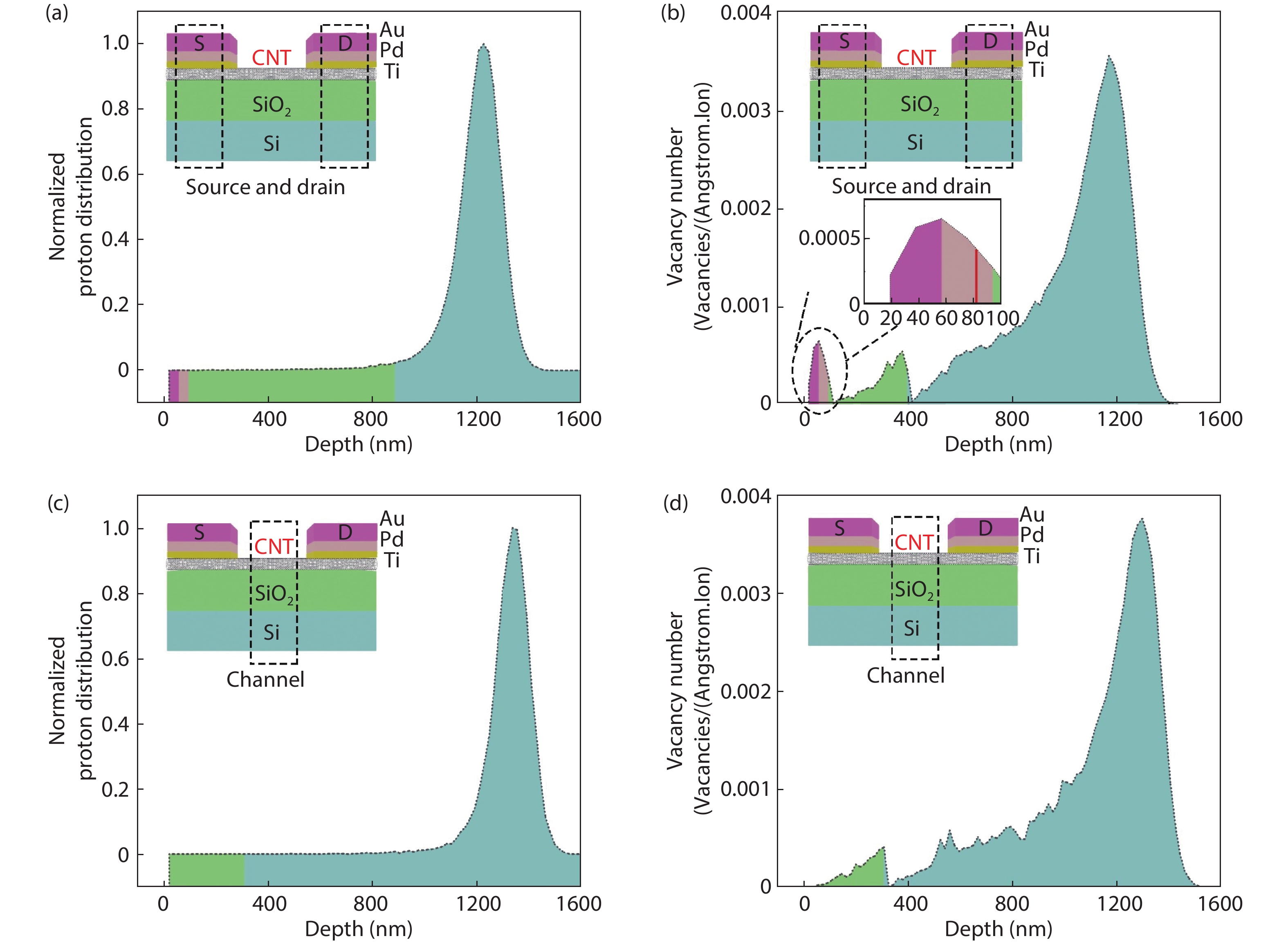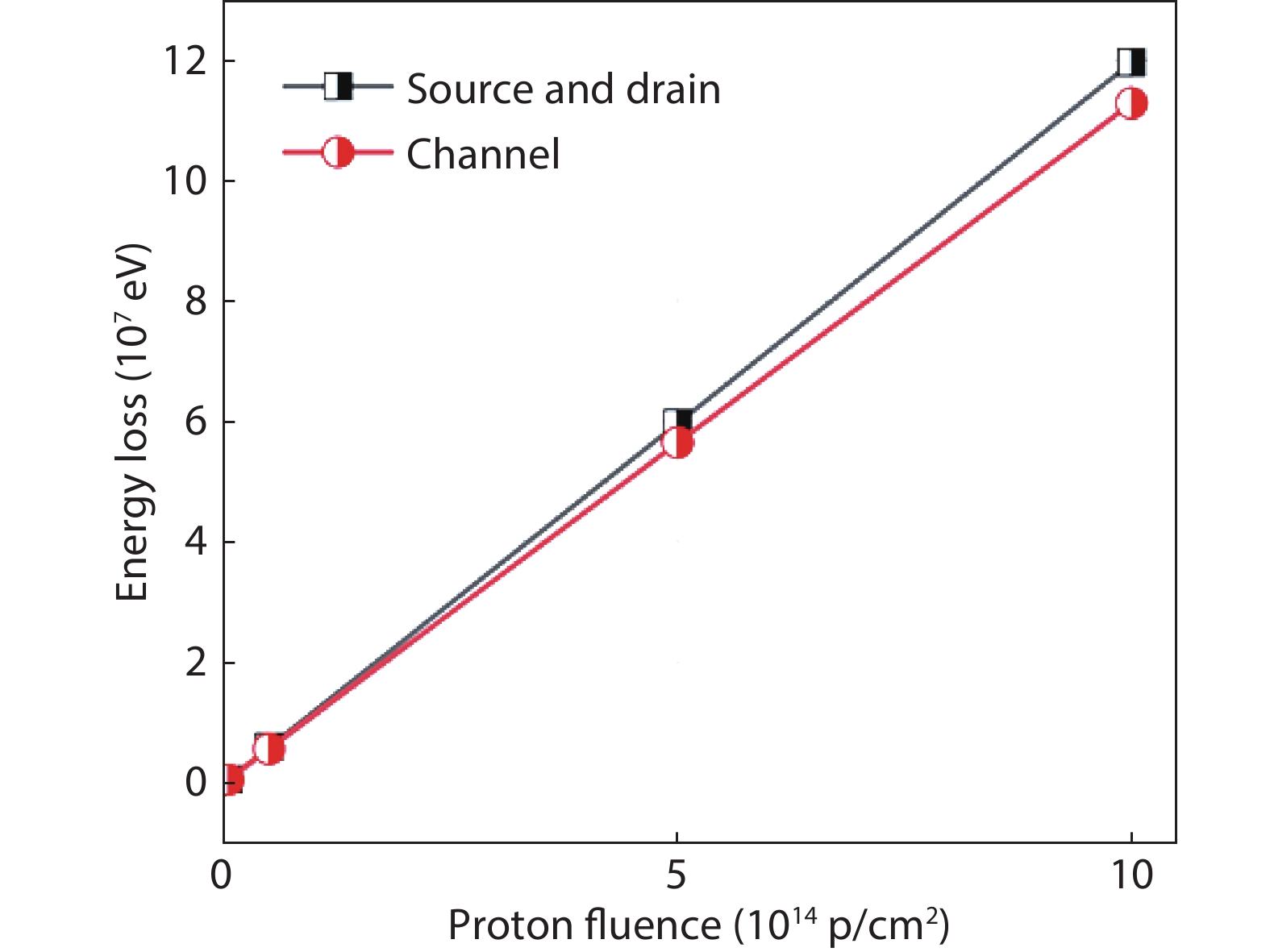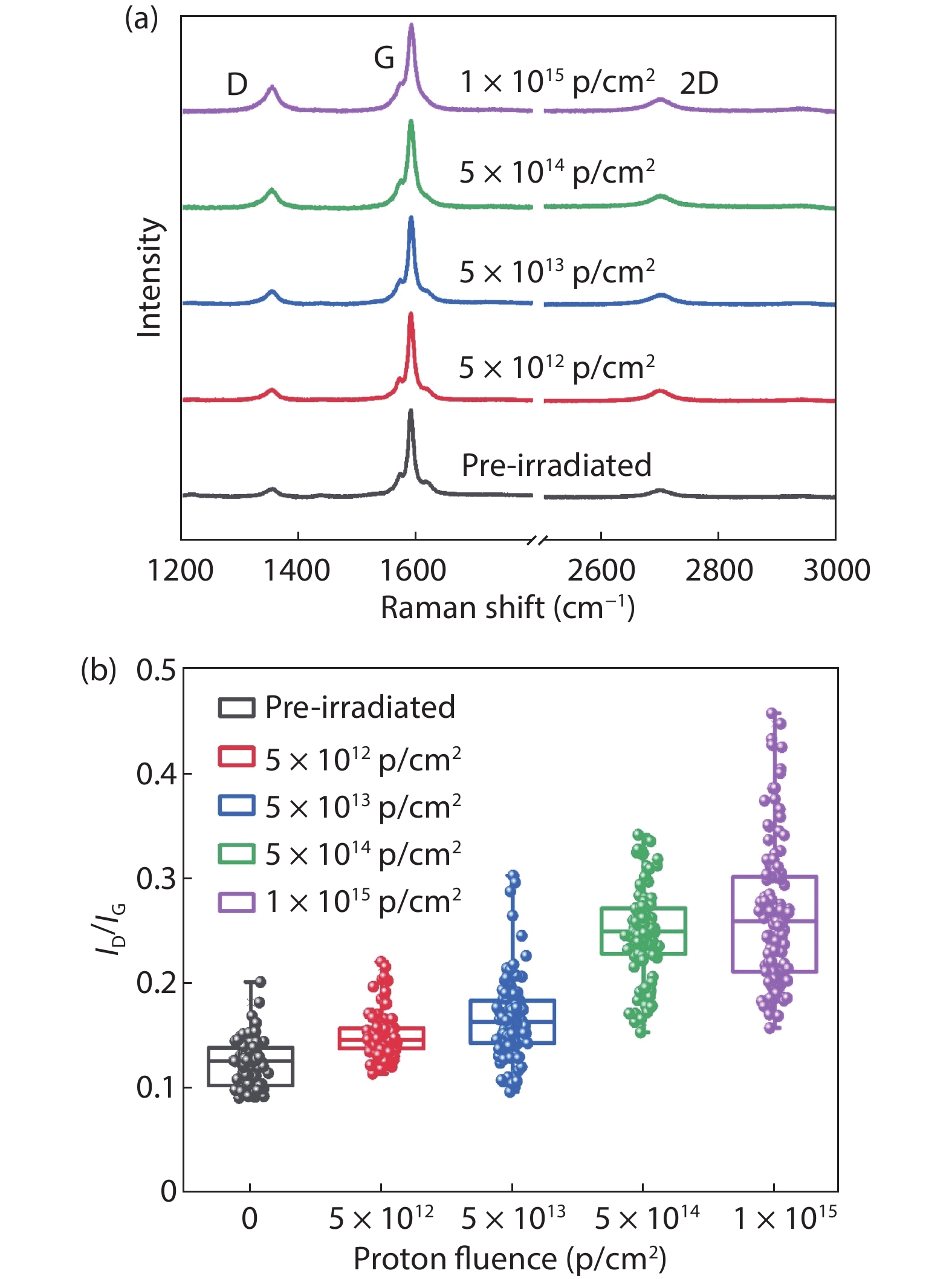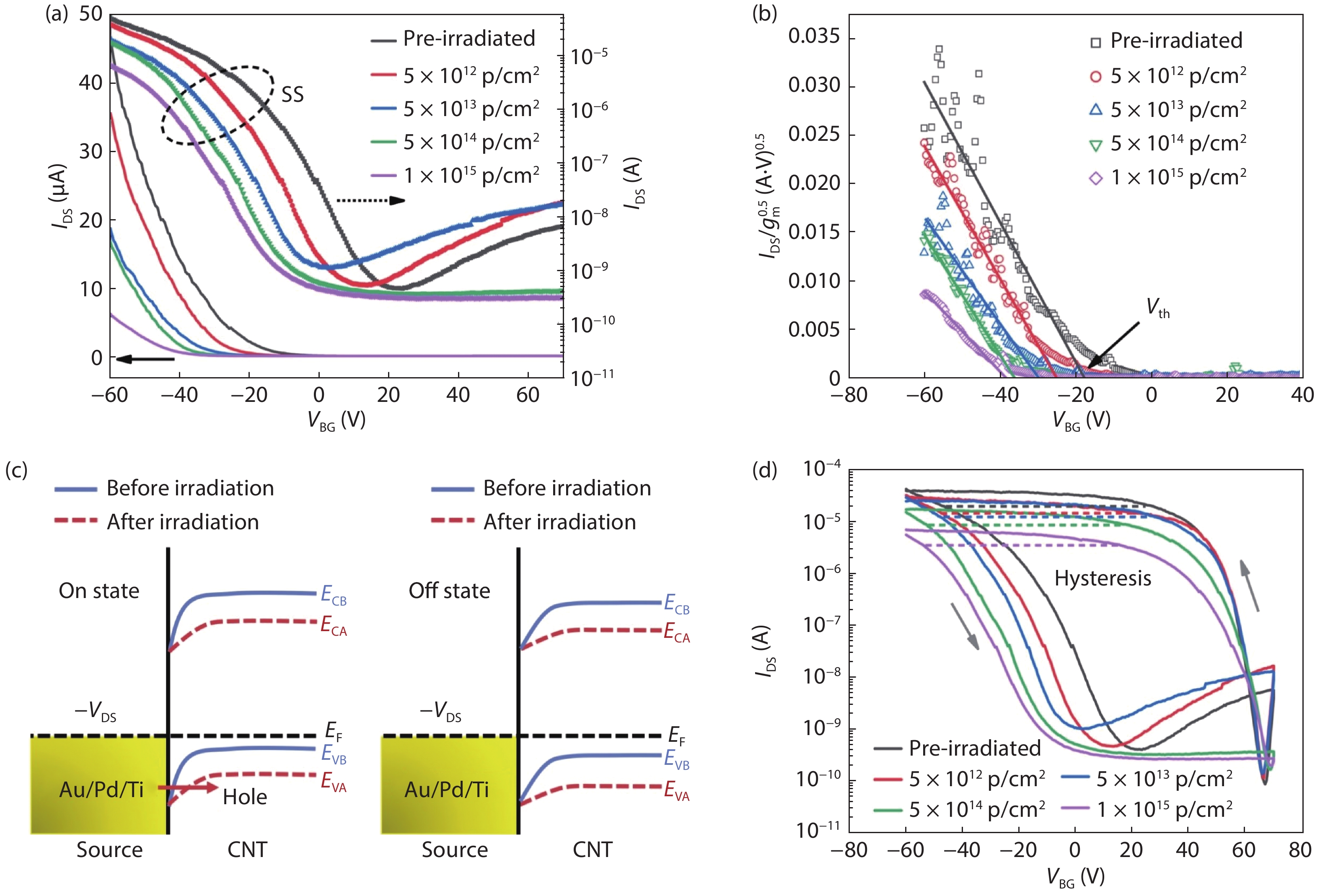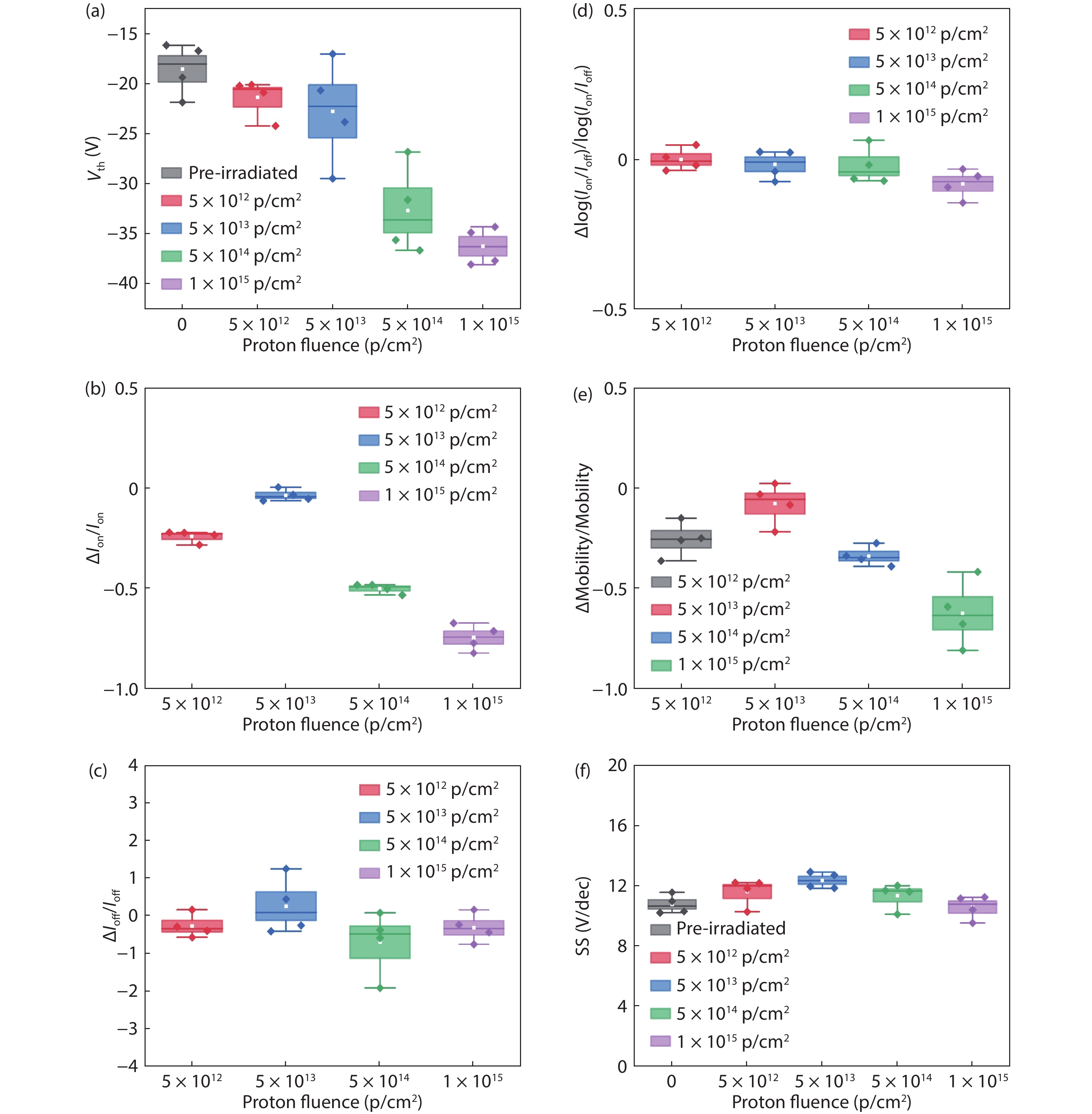| Citation: |
Xiaorui Zhang, Huiping Zhu, Song’ang Peng, Guodong Xiong, Chaoyi Zhu, Xinnan Huang, Shurui Cao, Junjun Zhang, Yunpeng Yan, Yao Yao, Dayong Zhang, Jingyuan Shi, Lei Wang, Bo Li, Zhi Jin. Radiation-hardened property of single-walled carbon nanotube film-based field-effect transistors under low-energy proton irradiation[J]. Journal of Semiconductors, 2021, 42(11): 112002. doi: 10.1088/1674-4926/42/11/112002
****
X R Zhang, H P Zhu, S Peng, G D Xiong, C Y Zhu, X N Huang, S R Cao, J J Zhang, Y P Yan, Y Yao, D Y Zhang, J Y Shi, L Wang, B Li, Z Jin, Radiation-hardened property of single-walled carbon nanotube film-based field-effect transistors under low-energy proton irradiation[J]. J. Semicond., 2021, 42(11): 112002. doi: 10.1088/1674-4926/42/11/112002.
|
Radiation-hardened property of single-walled carbon nanotube film-based field-effect transistors under low-energy proton irradiation
DOI: 10.1088/1674-4926/42/11/112002
More Information
-
Abstract
Strong C–C bonds, nanoscale cross-section and low atomic number make single-walled carbon nanotubes (SWCNTs) a potential candidate material for integrated circuits (ICs) applied in outer space. However, very little work combines the simulation calculations with the electrical measurements of SWCNT field-effect transistors (FETs), which limits further understanding on the mechanisms of radiation effects. Here, SWCNT film-based FETs were fabricated to explore the total ionizing dose (TID) and displacement damage effect on the electrical performance under low-energy proton irradiation with different fluences up to 1 × 1015 p/cm2. Large negative shift of the threshold voltage and obvious decrease of the on-state current verified the TID effect caused in the oxide layer. The stability of the subthreshold swing and the off-state current reveals that the displacement damage caused in the CNT layer is not serious, which proves that the CNT film is radiation-hardened. Specially, according to the simulation, we found the displacement damage caused by protons is different in the source/drain contact area and channel area, leading to varying degrees of change for the contact resistance and sheet resistance. Having analyzed the simulation results and electrical measurements, we explained the low-energy proton irradiation mechanism of the CNT FETs, which is essential for the construction of radiation-hardened CNT film-based ICs for aircrafts. -
References
[1] Akinwande D, Huyghebaert C, Wang C H, et al. Graphene and two-dimensional materials for silicon technology. Nature, 2019, 573, 507 doi: 10.1038/s41586-019-1573-9[2] Tulevski G S, Franklin A D, Frank D, et al. Toward high-performance digital logic technology with carbon nanotubes. ACS Nano, 2014, 8, 8730 doi: 10.1021/nn503627h[3] Chau R, Datta S, Doczy M, et al. Benchmarking nanotechnology for high-performance and low-power logic transistor applications. IEEE Trans Nanotechnol, 2005, 4, 153 doi: 10.1109/TNANO.2004.842073[4] Franklin A D. The road to carbon nanotube transistors. Nature, 2013, 498, 443 doi: 10.1038/498443a[5] Liu L J, Han J, Xu L, et al. Aligned, high-density semiconducting carbon nanotube arrays for high-performance electronics. Science, 2020, 368, 850 doi: 10.1126/science.aba5980[6] McMorrow J J, Cress C D, Gaviria Rojas W A, et al. Radiation-hard complementary integrated circuits based on semiconducting single-walled carbon nanotubes. ACS Nano, 2017, 11, 2992 doi: 10.1021/acsnano.6b08561[7] Krasheninnikov A V, Nordlund K. Ion and electron irradiation-induced effects in nanostructured materials. J Appl Phys, 2010, 107, 071301 doi: 10.1063/1.3318261[8] Zhu M G, Zhang Z Y, Peng L M. High-performance and radiation-hard carbon nanotube complementary static random-access memory. Adv Electron Mater, 2019, 5, 1900313 doi: 10.1002/aelm.201900313[9] Francis S A, Cress C D, McClory J W, et al. Characterization of radiation damage in carbon nanotube field-effect transistors. IEEE Trans Nucl Sci, 2013, 60, 4087 doi: 10.1109/TNS.2013.2284542[10] Zhang C X, Zhang E, Fleetwood D M, et al. Total-ionizing-dose effects and reliability of carbon nanotube FET devices. Microelectron Reliab, 2014, 54, 2355 doi: 10.1016/j.microrel.2014.05.011[11] Cress C D, McMorrow J J, Robinson J T, et al. Radiation effects in single-walled carbon nanotube thin-film-transistors. IEEE Trans Nucl Sci, 2010, 57, 3040 doi: 10.1063/1.3268470[12] Peck D S, Schmid E R. Effects of radiation on transistors in the first telstar satellite. Nature, 1963, 199, 741 doi: 10.1038/199741a0[13] Fleetwood D M. Evolution of total ionizing dose effects in MOS devices with Moore's law scaling. IEEE Trans Nucl Sci, 2018, 65, 1465 doi: 10.1109/TNS.2017.2786140[14] Summers G P, Messenger S R, Burke E A, et al. Low energy proton-induced displacement damage in shielded GaAs solar cells in space. Appl Phys Lett, 1997, 71, 832 doi: 10.1063/1.119660[15] Xiong G D, Qin Z L, Li B, et al. Radiation hardness and abnormal photoresponse dynamics of the CH3NH3PbI3 perovskite photodetector. J Mater Chem C, 2021, 9, 2095 doi: 10.1039/D0TC05148A[16] Schwank J R, Shaneyfelt M R, Dodd P E. Radiation hardness assurance testing of microelectronic devices and integrated circuits: Radiation environments, physical mechanisms, and foundations for hardness assurance. IEEE Trans Nucl Sci, 2013, 60, 2074 doi: 10.1109/TNS.2013.2254722[17] Abbe E, Schüler T, Klosz S, et al. Electrical behaviour of carbon nanotubes under low-energy proton irradiation. J Nucl Mater, 2017, 495, 299 doi: 10.1016/j.jnucmat.2017.08.032[18] Hong W K, Lee C, Nepal D, et al. Radiation hardness of the electrical properties of carbon nanotube network field effect transistors under high-energy proton irradiation. Nanotechnology, 2006, 17, 5675 doi: 10.1088/0957-4484/17/22/023[19] Nelson A J, Baby L, Boroujeni A Y, et al. Effect of proton irradiation on the electrical resistivity of carbon nanotube-epoxy composites. Nanosci Nanotechnol Lett, 2015, 7, 157 doi: 10.1166/nnl.2015.1898[20] Ishii S, Toki J, Oikawa M, et al. Electrical responses of a carbon nanotube thin-film transistor to MeV proton irradiation in air. Radiat Eff Defects Solids, 2020, 175, 440 doi: 10.1080/10420150.2019.1671386[21] Gigax J G, Bradford P D, Shao L. Radiation-induced mechanical property changes of CNT yarn. Nucl Instrum Methods Phys Res Sect B, 2017, 409, 268 doi: 10.1016/j.nimb.2017.04.050[22] Ziegler J F, Ziegler M D, Biersack J P. SRIM – The stopping and range of ions in matter (2010). Nucl Instrum Methods Phys Res Sect B, 2010, 268, 1818 doi: 10.1016/j.nimb.2010.02.091[23] Allison J, Amako K, Apostolakis J, et al. Recent developments in Geant4. Nucl Instrum Methods Phys Resh Sect A, 2016, 835, 186 doi: 10.1016/j.nima.2016.06.125[24] Zhang J J, Liu F Y, Li B, et al. Single event upset for monolithic 3-D integrated 6T SRAM based on a 22 nm FD-SOI technology: Effects of channel size and temperature. Microelectron Reliab, 2020, 114, 113783 doi: 10.1016/j.microrel.2020.113783[25] Kim W, Javey A, Vermesh O, et al. Hysteresis caused by water molecules in carbon nanotube field-effect transistors. Nano Lett, 2003, 3, 193 doi: 10.1021/nl0259232[26] Lee S, Peng J W. Effect of plasma treatment on electrical conductivity and Raman spectra of carbon nanotubes. J Phys Chem Solids, 2011, 72, 1101 doi: 10.1016/j.jpcs.2011.06.012[27] Kim D W, Lee K W, Choi D M, et al. Raman spectroscopy of proton-irradiated octadecylamine-functionalized carbon nanotube films. J Korean Phys Soc, 2015, 67, 608 doi: 10.3938/jkps.67.608[28] Anelli G, Campbell M, Delmastro M, et al. Radiation tolerant VLSI circuits in standard deep submicron CMOS technologies for the LHC experiments: Practical design aspects. IEEE Trans Nucl Sci, 1999, 46, 1690 doi: 10.1109/23.819140[29] Chang H Y, Zhu W N, Akinwande D. On the mobility and contact resistance evaluation for transistors based on MoS2 or two-dimensional semiconducting atomic crystals. Appl Phys Lett, 2014, 104, 113504 doi: 10.1063/1.4868536[30] Ghibaudo G. New method for the extraction of MOSFET parameters. Electron Lett, 1988, 24, 543 doi: 10.1049/el:19880369[31] Schwank J R, Shaneyfelt M R, Fleetwood D M, et al. Radiation effects in MOS oxides. IEEE Trans Nucl Sci, 2008, 55, 1833 doi: 10.1109/TNS.2008.2001040[32] Zhao Y D, Li D Q, Xiao L, et al. Radiation effects and radiation hardness solutions for single-walled carbon nanotube-based thin film transistors and logic devices. Carbon, 2016, 108, 363 doi: 10.1016/j.carbon.2016.07.033[33] He Y, Zhang J Y, Hou S M, et al. Schottky barrier formation at metal electrodes and semiconducting carbon nanotubes. Appl Phys Lett, 2009, 94, 093107 doi: 10.1063/1.3093677[34] Banhart F. Interactions between metals and carbon nanotubes: At the interface between old and new materials. Nanoscale, 2009, 1, 201 doi: 10.1039/b9nr00127a[35] Cress C D, McMorrow J J, Robinson J T, et al. Total ionizing dose-hardened carbon nanotube thin-film transistors with silicon oxynitride gate dielectrics. MRS Commun, 2011, 1, 27 doi: 10.1557/mrc.2011.10[36] Schwank J R, Winokur P S, Sexton F W, et al. Radiation-induced interface-state generation in MOS devices. IEEE Trans Nucl Sci, 1986, 33, 1177 doi: 10.1109/TNS.1986.4334575[37] Huang X N, Yao Y, Peng S, et al. Effects of charge trapping at the MoS2–SiO2 interface on the stability of subthreshold swing of MoS2 field effect transistors. Materials, 2020, 13, 2896 doi: 10.3390/ma13132896[38] Huang X N, Shi J Y, Yao Y, et al. Layer thickness influenced irradiation effects of proton beam on MoS2 field effect transistors. Nanotechnology, 2021, 32, 135204 doi: 10.1088/1361-6528/abd129[39] Yao Y, Peng S A, Huang X N, et al. A uniform stable P-type graphene doping method with a gold etching process. Nanotechnology, 2019, 30, 405205 doi: 10.1088/1361-6528/ab2e33[40] Peng S A, Jin Z, Ma P, et al. The sheet resistance of graphene under contact and its effect on the derived specific contact resistivity. Carbon, 2015, 82, 500 doi: 10.1016/j.carbon.2014.11.001[41] Peng S, Jin Z, Yao Y, et al. Controllable p-to-n type conductance transition in top-gated graphene field effect transistor by interface trap engineering. Adv Electron Mater, 2020, 6, 2000496 doi: 10.1002/aelm.202000496[42] Peng S A, Jin Z, Zhang D Y, et al. How do contact and channel contribute to the Dirac points in graphene field-effect transistors. Adv Electron Mater, 2018, 4, 1800158 doi: 10.1002/aelm.201800158[43] Peng S, Jin Z, Zhang D Y, et al. Carrier-number-fluctuation induced ultralow 1/f noise level in top-gated graphene field effect transistor. ACS Appl Mater Interfaces, 2017, 9, 6661 doi: 10.1021/acsami.6b15862[44] Peng S, Jin Z, Zhang D, et al. Evidence of electric field-tunable tunneling probability in graphene and metal contact. Nanoscale, 2017, 9, 9520 doi: 10.1039/C7NR02502E[45] Peng S, Jin Z, Yao Y, et al. Metal-contact-induced transition of electrical transport in monolayer MoS2: From thermally activated to variable-range hopping. Adv Electron Mater, 2019, 5, 1900042 doi: 10.1002/aelm.201900042 -
Proportional views





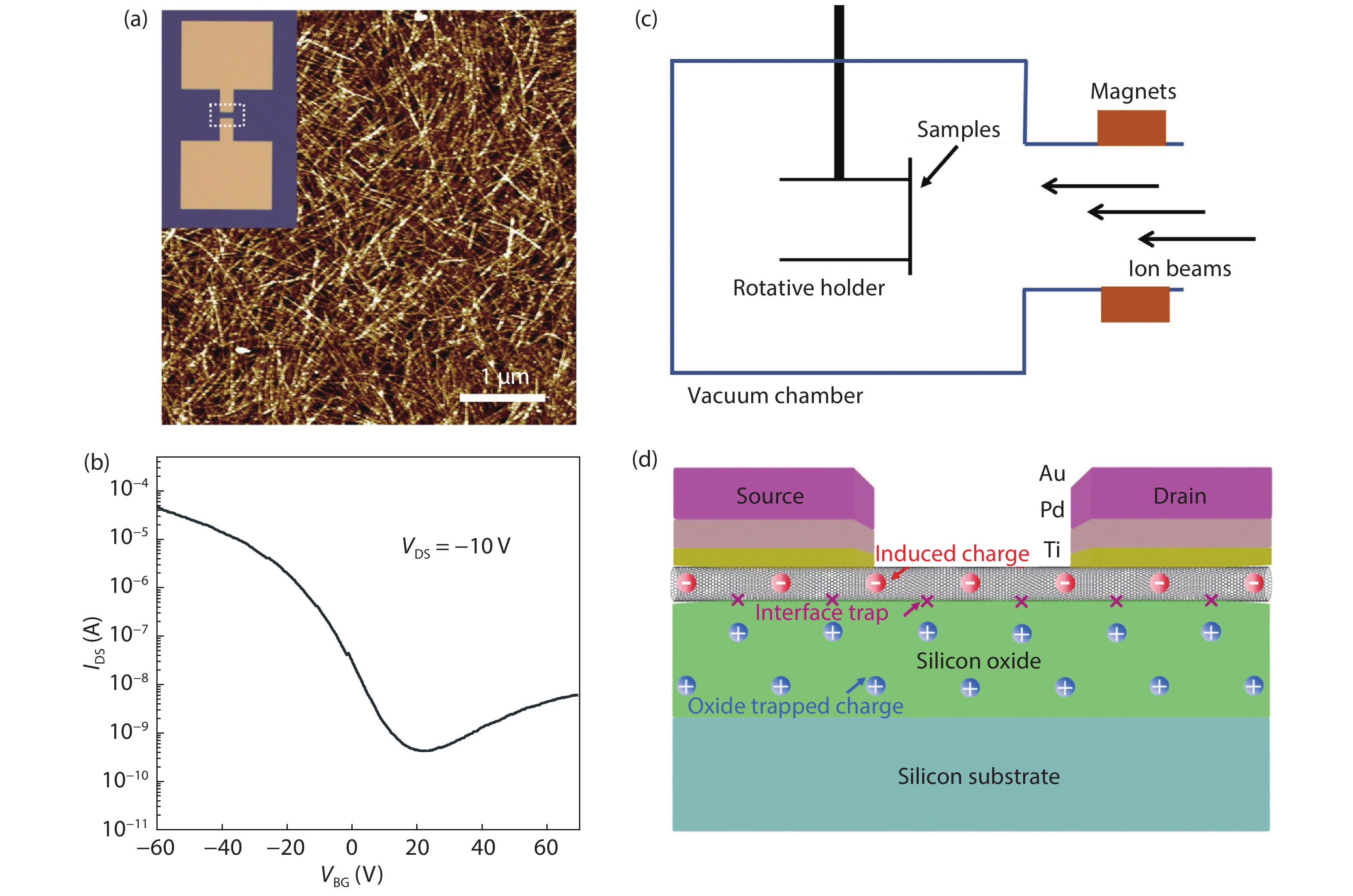
 DownLoad:
DownLoad:
